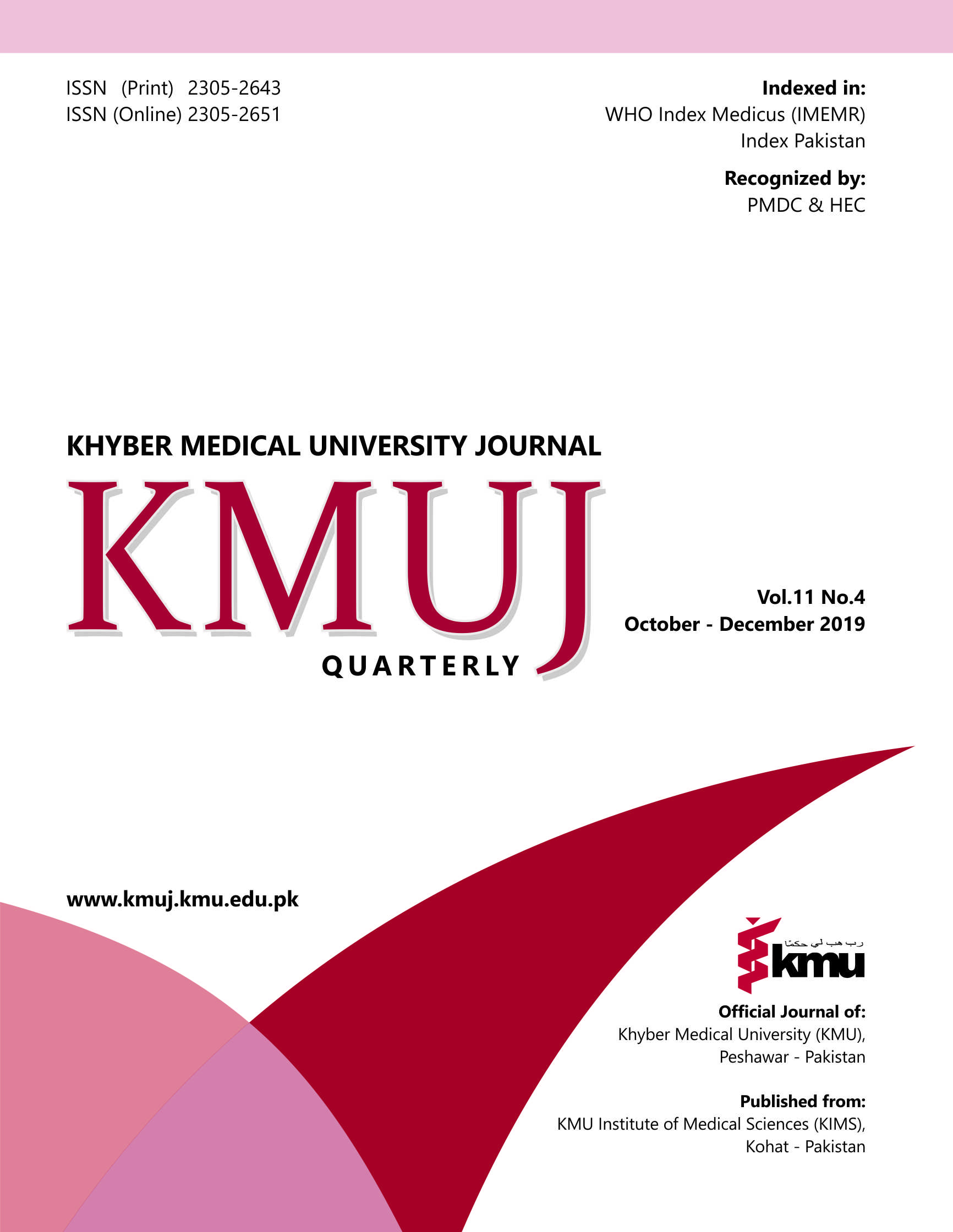STRENGTHENING TECHNICAL CAPACITY OF THE REGULATORY AUTHORITY IN PAKISTAN TO BRING REFORMS IN MEDICAL EDUCATION
Main Article Content
Abstract
Medical and dental colleges, whether in public or private sector, are important strategic assets for any country as they play significant role in strengthening health system of the country through providing well trained health workforce. Departments of medical education play crucial role in providing technical support to the medical and dental colleges to plan educational activities. Realizing the need for such departments, in 2008, the PM&DC made it mandatory, that every medical and dental college must have a department of medical education. These departments now form essential component of college infrastructure to provide effective and quality educational services. Similarly, a well-functioning department of medical education established at the PMC level is essential to support educational planning and ensure that the strategic decisions made by the governing body of the Commission are translated into reality through a strong nexus of such departments at the college and PMC level.
Article Details
Work published in KMUJ is licensed under a
Creative Commons Attribution 4.0 License
Authors are permitted and encouraged to post their work online (e.g., in institutional repositories or on their website) prior to and during the submission process, as it can lead to productive exchanges, as well as earlier and greater citation of published work.
(e.g., in institutional repositories or on their website) prior to and during the submission process, as it can lead to productive exchanges, as well as earlier and greater citation of published work.
References
Maniate JM. Trends and opportunities in medical education: Aligning to societal needs and expectations. Arch Med Health Sci 2017;5:154-6. DOI: 10.4103/amhs.amhs_98_17
Davis MH, Karunathilake I, Harden RM. AMEE Education Guide no. 28: The development and role of departments of medical education. Med Teach 2005;27(8):665-75. DOI: 10.1080/01421590500398788
Sethi A, Schofield S, McAleer S, Ajjawi R. The influence of postgraduate qualifications on educational identity formation of healthcare professionals. Adv Health Sci Educ Theory Pract 2018, 23(3):567-85. DOI: 10.1007/s10459-018-9814-5.
Rizwan M, Rosson N, Tackett S, Hassoun H. Opportunities and challenges in the current era of global medical education. Int J Med Educ 2018;27(9):111-2. DOI: 10.5116/ijme.5ad1.ce9a
McKimm J. Current trends in undergraduate medical education: program and curriculum design. Samoa Med J 2010;1(2):40-8.
Yousefy A, Changiz T, Yamani N, Zahrai RH, Ehsanpour S. Developing a holistic accreditation system for medical universities of the Islamic Republic of Iran. East Mediterr Health J 2009;15(3):747-56.
Sethi A, Javaid A. Accreditation system and standards for medical education in Pakistan: It’s time we raise the bar. Pak J Med Sci 2017;33(6):1299-1300. DOI: 10.12669/pjms.336.14178.
Pakistan Medical & Dental Council. List of recognised medical and dental institutions/ colleges / DAI’s 2018. [Cited on: October 14, 2018]. Available from URL: http://www.pmdc.org.pk/Allrecognizedinstitutes/tabid/340/Default.aspx
Government of Pakistan. The Gazette of Pakistan Extra. 2019. [Cited on: October 24, 2019]. Available from URL: http://www.pmdc.org.pk/
Sethi A, Schofield S, Ajjawi R, McAleer S. How do postgraduate qualifications in medical education impact on health professionals? Med Teach 2016;38(2):162-7. DOI: 10.3109/0142159X.2015.1009025.
Ali SM, Shamim MS. Way forward for departments of medical education in Pakistan. J Pak Med Assoc 2014;64(7):732-3.
Pakistan Medical and Dental Council (PMDC). Decisions of 111th meeting of PMDC. PMDC Circular to Medical Colleges. 2008.
Latif MZ, Wajid G. Reforming medical education in Pakistan through strengthening departments of medical education. Pak J Med Sci 2018;34(6):1439-44. DOI: 10.12669/pjms.346.15942
